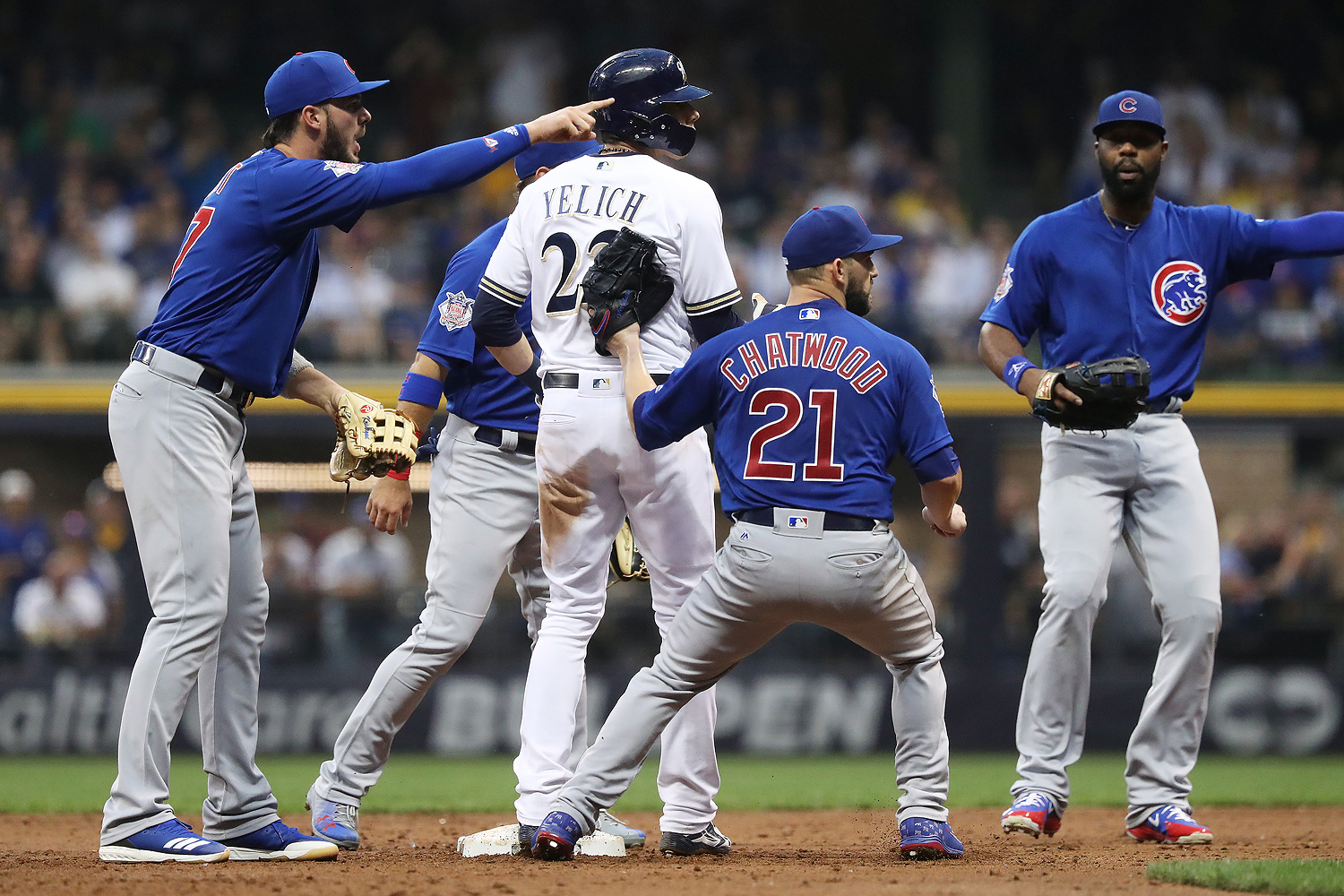Back in 2016, when I looked at why the Cubs were the best team in baseball coming into the season, one of the things I made sure to emphasize was their defense. The acquisition of Jason Heyward and the early emergence of Addison Russell gave the Cubs two of the best defenders at their positions in baseball.
That worked out. They were great at defense early in the season and kept it up all the way through the end of the season.
Now the Cubs are in second place. They're probably not a second-place team; they're probably going to win the division. But for the moment they're a game and a half behind the surprising Brewers. And they're also just a hair behind the Brewers by defensive metrics as well.
Take a look at a couple stats: Fangraphs' Defense metric and Ultimate Zone Rating, Defensive Runs Saved, and Baseball Prospectus's Park-Adjusted Defensive efficiency. The top five teams change depending on which one you use—we're still figuring out how to measure defense—except for two teams: the Cubs and Brewers.
Defense: Brewers over Cubs
UZR/150: Cubs over Brewers
PADE: Brewers over Cubs
DRS: Brewers over Cubs
The Cubs didn't have a lot of room to improve over last year. In 2017 they were 5th in baseball in PADE and 5th by Defense. Right now, they're fifth in PADE and second in Defense. By contrast, the Brewers were 13th by PADE and 22nd by Defense, and they've improved to second in PADE and first in Defense.
What happened? See if this sounds familiar: they acquired an outstanding center fielder and a young shortstop who debuted in the majors as a 21-year-old took a huge step forward as a defender. By Fangraphs' Defense metric, Lorenzo Cain is the best center fielder this year, and Orlando Arcia is the sixth-best shortstop. (The latter may sound like only mild praise, but keep in mind the three most valuable players by that metric—Andrelton Simmons, Jose Iglesias, and Francisco Lindor—are shortstops, and Arcia is in the top 20 overall.)
Another, indirect way, of looking at the two teams' defensive success is the difference between their ERA—the actual runs they actually give up—and xFIP, which is an attempt to measure how good pitchers are independent of their defense (Expected Fielding Independent Pitching). The Cubs have a pretty good ERA of 3.56 and a not very good xFIP of 4.29. The Brewers have basically the same ERA, 3.53, and a pretty good xFIP of 3.99.
The gap between ERA and xFIP is highest for the Cubs: 0.73. Again, it's an indirect relationship, but the Cubs' defense has taken the edge off a disappointing pitching staff. The Brewers' pitchers have been better, and their defense has made them better still. The two teams rank 28th and 29th out of 30 teams in batting average on balls in play—the Brewers a shade better at .269 against the Cubs' .271, more evidence that their defense is preventing runs.
And the Brewers took a page from the team that almost stopped the Cubs' 2016 World Series victory. Multi-inning reliever Josh Hader, the Andrew Miller of 2018, has a 1.21 ERA, and over a mere 44 innings has racked up 2.4 Wins Above Replacement. That's more than any of their starters, and more than any other Cubs pitcher as well.
All this adds up to a team that has been competitive in one-run games. Back in June, Jay Jaffe noted this, when the Brewers were 15-7 in such outcomes and the Cubs were 6-10. As of today the Brewers are 20-11 in one-run games and the Cubs are 8-13. If the Brewers were just .500 in those games—say, 16-15—the Cubs are in first with a bit of breathing room.
The Cubs run differential is twice that of the Brewers. Their pythagorean win-loss, an estimate of what their record should be, is 52-32: fourth in baseball behind the dominant American League teams and a bit better than their fellow National League super-team in Los Angeles. And it's much better than the Brewers' 50-37. It's unlikely that the Brewers will stay ahead of them for the rest of the season. Baseball Prospectus gives them 57 percent odds of winning the division, and Fangraphs has it at 74 percent. FiveThirtyEight is in the middle at 65 percent. Both have their odds of winning the World Series at a bit over 10 percent.
Fangraphs predicts the Cubs to finish at 93-69, the Brewers at 89-73, and the Cardinals at 85-77. Last year those three teams finished 92-70, 86-76, and 83-79, in that order. Like 2016, they'll probably be the best team in the National League by the time the season is over, thanks to tough first halves for the Dodgers and Nationals. Like 2017, they won't be as good as the best teams in the American League. You can't script October, but you can code a pretty good simulation of what will happen before then, and it looks pretty much the same.



